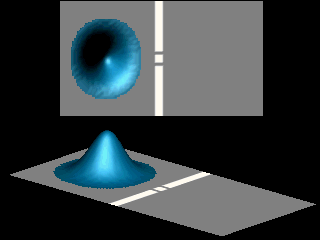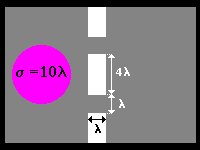 The numerical simulation of the two-slit experiment is shown in the next animation.
Initially the quantum particle is represented by a Gaussian wave packet of width
The numerical simulation of the two-slit experiment is shown in the next animation.
Initially the quantum particle is represented by a Gaussian wave packet of width
![]() .
The dimensions of the two slits are given in the schematic diagram.
.
The dimensions of the two slits are given in the schematic diagram.
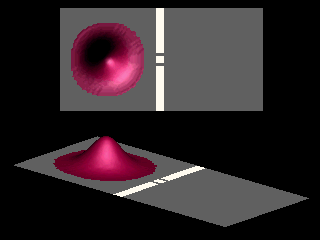
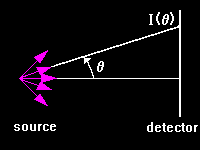 The maxima and minima in the probability distribution are a direct proof of the presence of interference.
The intensity
The maxima and minima in the probability distribution are a direct proof of the presence of interference.
The intensity
![]() recorded by a detector placed far away from a source characterizes the interference pattern.
The intensity
recorded by a detector placed far away from a source characterizes the interference pattern.
The intensity ![]() is called the angular distribution.
The simulation yields an angular distribution that is in excellent agreement with
is called the angular distribution.
The simulation yields an angular distribution that is in excellent agreement with 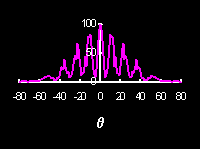 the Fraunhofer diffraction pattern of a double slit.
If you were to use a pencil to draw this pattern you would barely see the difference with the simulation result.
the Fraunhofer diffraction pattern of a double slit.
If you were to use a pencil to draw this pattern you would barely see the difference with the simulation result.
The following animations illustrate the effect of changing the dimensions of the double slit.
As in the case of the single slit the qualitative features of the diffraction
pattern 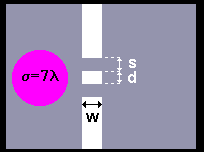 do not depend on the length
do not depend on the length ![]() of
the double slit.
Remember that an experiment with a single particle does not produce an interference pattern.
It is only after repeating the experiment with the single particle many times that an interference pattern emerges.
of
the double slit.
Remember that an experiment with a single particle does not produce an interference pattern.
It is only after repeating the experiment with the single particle many times that an interference pattern emerges.
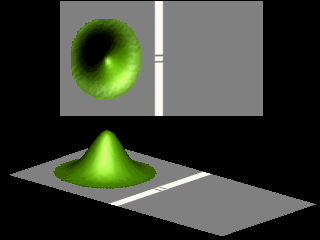
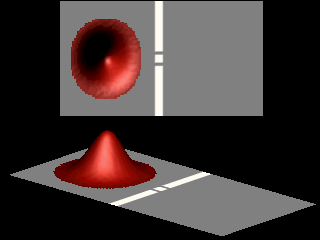
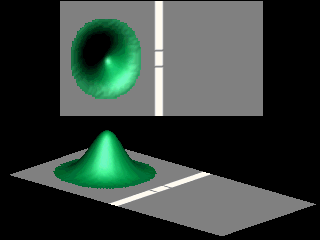
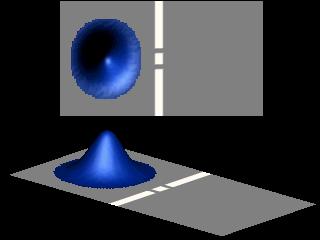
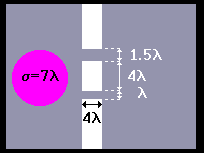 Imagine that you were given the double slit shown on the right.
If you would use this device in your experiment would you expect that the interference pattern
Imagine that you were given the double slit shown on the right.
If you would use this device in your experiment would you expect that the interference pattern
- will be asymmetric?
- is wiped out completely?
- does not change at all?
The answer to this question can be found by carefully looking at the following animation.
